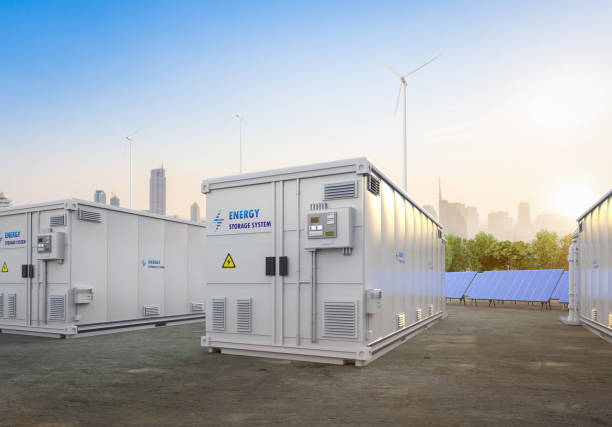Optimal monitoring with unique fire alarm (fire detection and early warning)
New energy battery compartment
Temperature monitoring in the new energy battery warehouse is a critical measure for ensuring the safety and performance of large-scale energy storage systems and electric vehicle (EV) batteries. During the charging and discharging process, batteries generate heat, and temperature variations have a significant impact on battery performance and safety. Therefore, monitoring the temperature in the new energy battery warehouse is essential.
In the new energy battery warehouse, the objective of temperature monitoring is to obtain real-time information about the temperature distribution, temperature trends, and the presence of abnormal temperature conditions within the battery packs. By monitoring the temperature of the battery packs, any overheating or extreme cold situations can be detected promptly. Appropriate measures can then be taken, such as adjusting charging and discharging strategies, enhancing heat dissipation, or conducting maintenance, to ensure the safety and stable performance of the battery system.

Traditional temperature monitoring methods often use discrete sensor placement, but due to the complex structure and large-scale deployment of battery packs, traditional methods may not provide comprehensive temperature monitoring. Distributed fiber optic temperature sensing technology, on the other hand, offers a high-precision and real-time temperature monitoring solution. By installing fiber optic sensors inside the battery warehouse, temperature changes can be comprehensively sensed and real-time temperature data can be obtained. Fiber optic sensors have the characteristics of high resolution and remote transmission, enabling them to cover the temperature monitoring needs of the entire battery warehouse.
With the application of distributed fiber optic temperature sensing technology, the new energy battery warehouse can achieve real-time temperature monitoring and control of the battery packs, proactively detecting temperature anomalies, and taking appropriate measures for adjustment and maintenance. This helps improve the safety, stability, and lifespan of the battery system, ensuring the safe operation of the battery warehouse.
In the new energy battery warehouse, distributed fiber optic temperature sensing technology can be used for heat generation warning to ensure the safe operation of the batteries.
Monitoring Plan:

Fiber Deployment: Install distributed fiber optic sensors at key locations in the battery warehouse, such as battery pack storage areas, battery racks, and around battery modules. The fiber optic cables can come into contact with the battery surfaces or the surrounding environment to sense temperature changes.
Fiber Connection and Data Acquisition: Connect the fiber optic sensors to the monitoring system to ensure real-time data acquisition and transmission of temperature readings. The signals from the fiber optic cables can be digitized and processed using fiber optic devices and interfaces.
Real-time Monitoring and Data Analysis: The monitoring system can continuously monitor the temperature changes in the areas connected to the fiber optic sensors. Temperature data can be analyzed and recorded in real-time by the monitoring system, allowing maintenance personnel to understand the temperature distribution and trends within the battery warehouse.
Temperature Warning and Alarms: The monitoring system can be configured with temperature warning and alarm functions based on safety requirements and predefined temperature thresholds. When the temperature exceeds or falls below the set thresholds, the system will trigger warnings and alarms, notifying maintenance personnel to take appropriate actions promptly.
Remote Monitoring and Control: The distributed fiber optic temperature sensing system can be connected to a central control room or remote management platform, enabling remote monitoring and control capabilities. Maintenance personnel can access temperature data through remote terminals, monitor temperature changes in real-time, and take necessary actions when needed.
Data Recording and Analysis: Temperature data can be recorded and analyzed over a long period, enabling the generation of reports and trend analysis. This helps predict heat generation trends of the batteries, detect abnormalities early, and take necessary safety measures in a timely manner.

Through the application of distributed optical fiber temperature measurement technology, new energy battery warehouses can monitor the temperature changes of batteries in real-time and detect overheating in advance to provide early warnings and protect the safety of the batteries. This helps reduce the safety risks associated with battery overheating, improves the safety of the warehouse, and ensures the stable operation of the battery system.
PREVIOUS:hazardous chemical warehouse heat warning
NEXT:Coal storage yard





